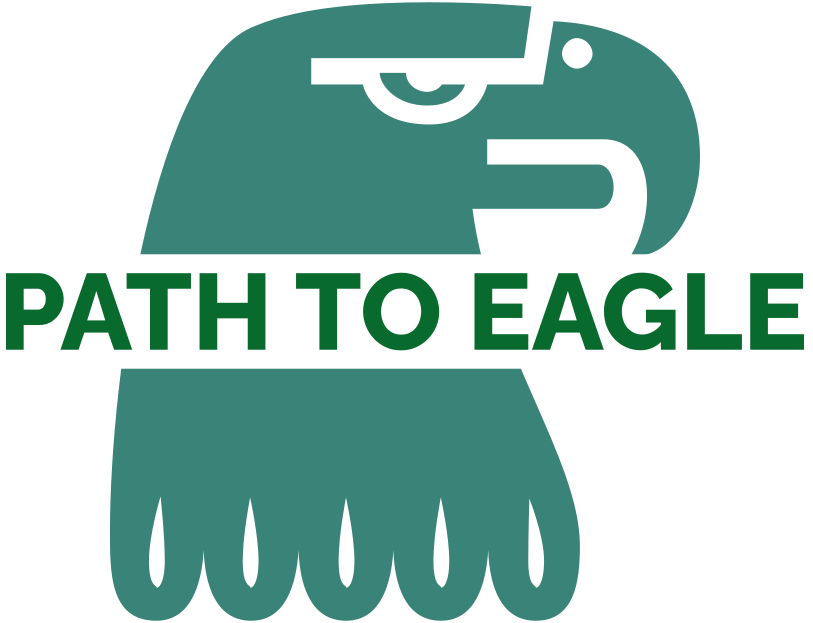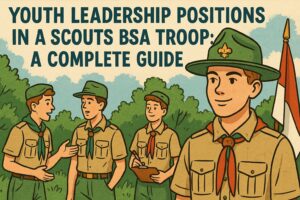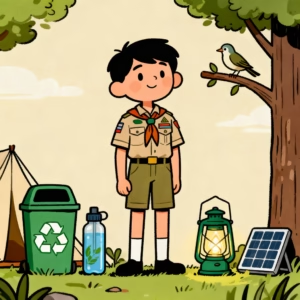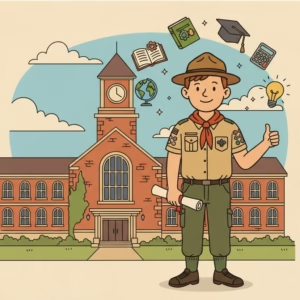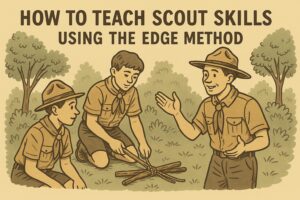Scouts BSA is designed to be youth-led. One of the most important aspects of that structure is giving Scouts the opportunity to hold leadership positions within the troop. These positions help Scouts build confidence, learn responsibility, and contribute to the success of the troop as a whole.
Holding a position of responsibility is also a requirement for many of the higher ranks, including Star, Life, and Eagle. Below is an in-depth guide to each official youth leadership role in a Scouts BSA troop, including their responsibilities and how they support the troop’s program.
Senior Patrol Leader (SPL)
The Senior Patrol Leader is the highest-ranking youth leader in the troop. Elected by the entire troop, the SPL is responsible for leading all troop activities. This includes running troop meetings, leading outings, and overseeing the Patrol Leaders’ Council (PLC), which plans the troop’s program. The SPL represents the youth when working with the Scoutmaster and other adult leaders.
Key responsibilities:
- Run all troop meetings, events, and PLC meetings
- Delegate tasks to other youth leaders
- Serve as the voice of the Scouts in troop planning
- Ensure troop operations run smoothly
Assistant Senior Patrol Leader (ASPL)
The Assistant Senior Patrol Leader is appointed by the SPL and serves as their second-in-command. The ASPL assists the SPL in all leadership duties and stands in when the SPL is unavailable. They also directly supervise several other youth positions, such as the quartermaster, scribe, and instructors.
Key responsibilities:
- Assist the SPL in running the troop
- Supervise appointed youth leaders
- Take over leadership duties when SPL is absent
- Help train and mentor other youth leaders
Patrol Leader
Each patrol elects a Patrol Leader to lead them. The Patrol Leader represents the patrol at the Patrol Leaders’ Council and is responsible for encouraging participation, helping plan patrol activities, and maintaining communication with both the patrol members and troop leadership.
Key responsibilities:
- Lead the patrol during meetings and outings
- Represent the patrol at PLC meetings
- Help patrol members advance and stay engaged
- Communicate information from troop leadership
Assistant Patrol Leader (APL)
The Assistant Patrol Leader is appointed by the Patrol Leader and helps them with leadership responsibilities. The APL steps in when the Patrol Leader is absent but does not attend PLC meetings unless invited.
Key responsibilities:
- Support the Patrol Leader in all patrol functions
- Take charge of the patrol in the PL’s absence
- Assist with patrol organization and communication
Troop Guide
The Troop Guide is usually an older, experienced Scout assigned to work with a new-Scout patrol. They act as a mentor and help new Scouts learn basic skills, adjust to troop life, and progress through early ranks like Scout, Tenderfoot, Second Class, and First Class.
Key responsibilities:
- Teach basic Scout skills
- Mentor new Scouts
- Help new Scouts understand troop procedures
- Support the Patrol Leader of the new-Scout patrol
Quartermaster
The Quartermaster is responsible for managing troop gear and supplies. This includes keeping an inventory, issuing gear for outings, and ensuring everything is returned in good condition. The Quartermaster helps make sure the troop is well-equipped for all events.
Key responsibilities:
- Keep track of troop equipment and supplies
- Organize and store gear properly
- Check gear in and out during troop events
- Report equipment needs or repairs to adult leaders
Scribe
The Scribe acts as the troop’s secretary. They take notes during Patrol Leaders’ Council meetings, help maintain attendance records, and may assist with troop communication such as announcements or reminders.
Key responsibilities:
- Record minutes of PLC meetings
- Maintain troop attendance records
- Assist with troop communications and rosters
Instructor
An Instructor is a Scout with a high level of knowledge in a specific area, such as knots, first aid, or camping. Instructors are responsible for teaching these skills to other Scouts during meetings or outings.
Key responsibilities:
- Plan and deliver skill instruction sessions
- Help younger Scouts learn advancement requirements
- Support troop training and merit badge workshops
Chaplain Aide
The Chaplain Aide promotes the religious aspect of Scouting within the troop. They help lead interfaith services at campouts and encourage reverence among Scouts.
Key responsibilities:
- Plan and lead troop worship services
- Promote reverence and religious observance
- Work with the troop chaplain (an adult leader) to meet the troop’s spiritual needs
Webmaster
The Webmaster manages the troop’s website or digital tools. This role is ideal for Scouts interested in technology and communication. They ensure information is accurate, up to date, and accessible to troop members and families.
Key responsibilities:
- Maintain and update the troop website
- Post announcements, calendars, and resources
- Support digital communication among Scouts and parents
Librarian
The Librarian keeps track of the troop’s literature, including merit badge pamphlets, handbooks, and training guides. They check out materials to Scouts and make sure everything stays organized and available.
Key responsibilities:
- Maintain the troop’s book and resource library
- Lend materials to Scouts
- Keep records of checked-out and returned items
Historian
The Historian documents the troop’s history by taking photos, writing summaries of events, and maintaining scrapbooks or digital archives. This role helps preserve the troop’s legacy.
Key responsibilities:
- Take photos and notes at troop events
- Maintain troop history records or scrapbook
- Share past accomplishments and traditions
Bugler
The Bugler plays the bugle (or other approved instrument) at appropriate times during troop events. This includes wake-up, lights out, and other calls that follow traditional camp routines.
Key responsibilities:
- Perform bugle calls at troop activities
- Support ceremonies and flag duties with music
- Learn and practice appropriate Scout bugle calls
Den Chief
The Den Chief is a Scout who works with a Cub Scout den to help lead meetings, teach skills, and encourage younger Scouts to eventually join a troop. This is a great way for older Scouts to serve and mentor the next generation.
Key responsibilities:
- Assist a Cub Scout den leader during meetings
- Lead games, songs, and Scout skills
- Be a role model for younger Scouts
- Encourage Webelos to bridge into Scouts BSA
Junior Assistant Scoutmaster (JASM)
A Junior Assistant Scoutmaster is a Scout age 16 or older who has shown strong leadership. They function almost like an adult leader and support the Scoutmaster with training, mentoring, and troop organization. This is an honorary role and often a stepping stone to becoming an Assistant Scoutmaster at age 18.
Key responsibilities:
- Mentor youth leaders
- Assist in troop planning and supervision
- Serve as a bridge between youth and adult leadership
Conclusion
Youth leadership roles in a Scouts BSA troop give Scouts the chance to take ownership of their experience, help their peers, and grow in responsibility. Whether they’re running meetings as SPL or teaching first aid as an Instructor, every position helps build skills that will benefit Scouts for life. Encouraging Scouts to take on these responsibilities is one of the best ways to build a strong, youth-led troop.
